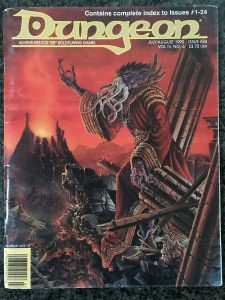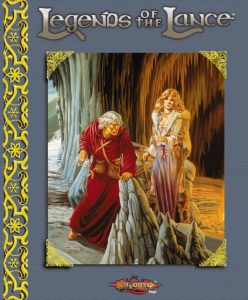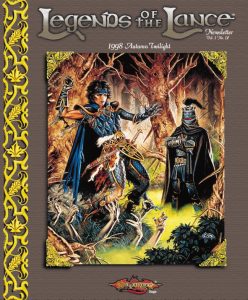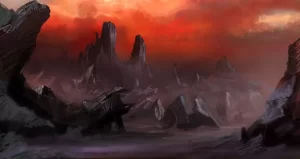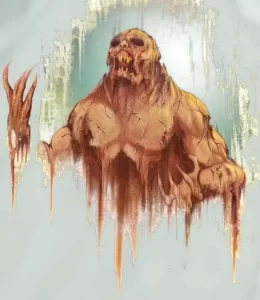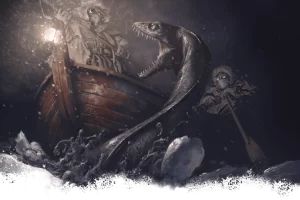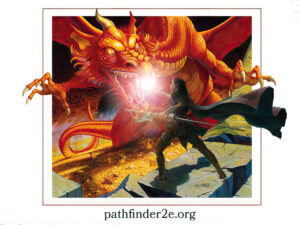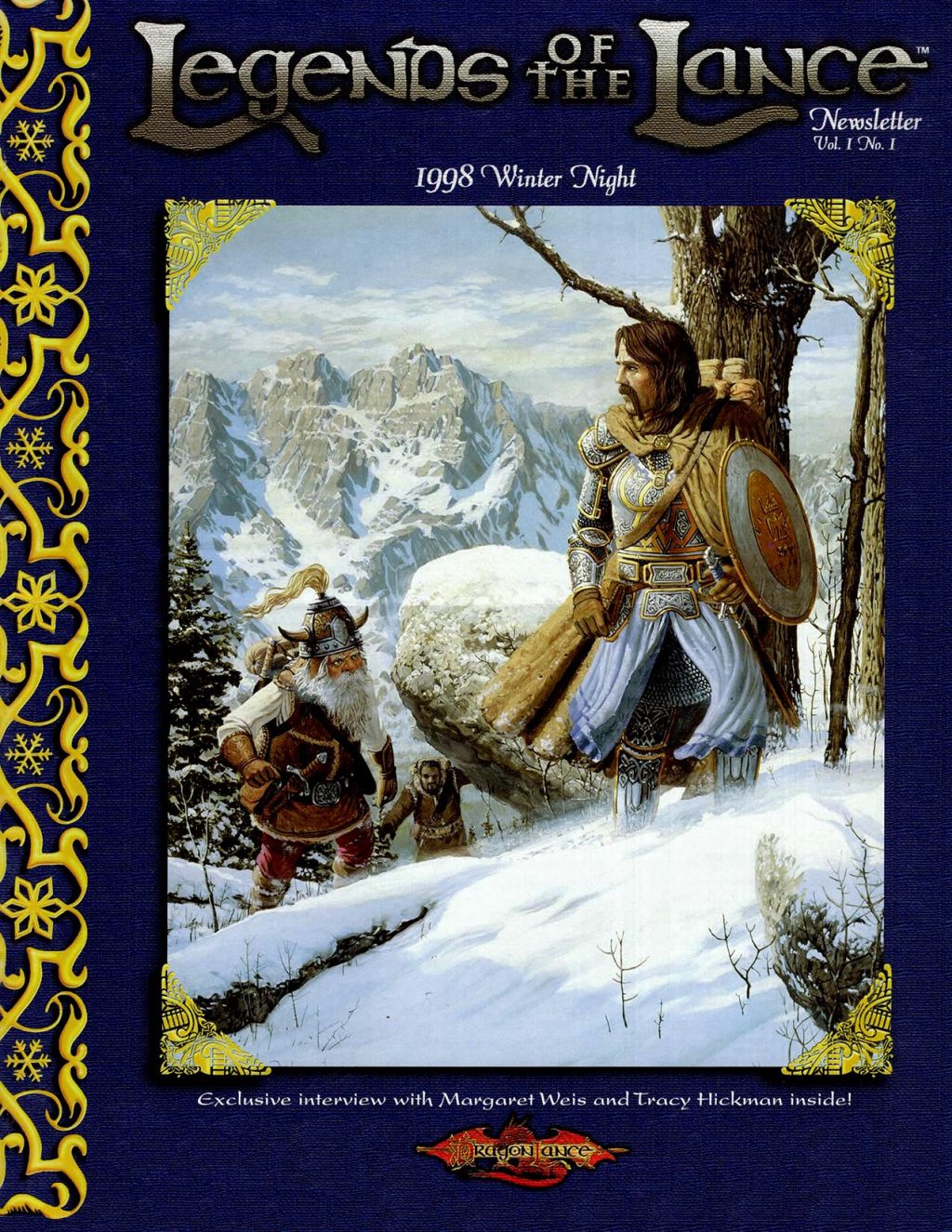
In the winter of 1998, Dragonlance fans were treated to something more than just another supplement or novel. They received an invitation into the heart of Krynn itself through the pages of "Legends of the Lance, Winter Night Vol. 1 No. 1," a publication that served not only as a newsletter but as a love letter to the Dragonlance saga and its fandom. Published by TSR and carefully helmed by Sue Weinlein Cook and a dedicated team, this debut issue captures a pivotal moment in the franchise's evolution as it sought to bridge the classic AD&D heritage with the emerging Fifth Age.
The issue opens with an earnest and personal letter from Cook, emphasizing her deep connection to the world of Dragonlance. As both a fan and a creative force within TSR, she shares the emotional resonance the saga holds for her and for thousands of readers who saw more than fiction in the tales of Krynn. Her words do more than welcome; they affirm that the fans are as much a part of Dragonlance as the authors and artists who craft its mythos.
At the heart of this issue lies an in-depth interview with Margaret Weis and Tracy Hickman, the twin architects behind the Chronicles and Legends trilogies. This conversation, conducted by editor Pat McGilligan, reveals the surprising humility and candor behind their creative partnership. Hickman reflects on how becoming a novelist was never his initial ambition and credits Weis for being the driving literary force. Both recount the early challenges at TSR, particularly the company's lukewarm attitude toward novel publishing compared to game production. What shines through, however, is the unrelenting passion that carried the Dragonlance novels from a background project into a cultural landmark. The interview also touches on key lore elements, such as the origins of Raistlin Majere's character, the creative rationale behind his iconic features, and the evolving relationship between the twins Raistlin and Caramon.
The lore expands further with Christopher Perkins' contribution, "The Wyrms of Icewall Glacier," which paints a vividly chilling portrait of two white dragon sisters, Cryonisis and Frisindia. These dragons, cunning and ambitious, dominate a frozen expanse of southern Ansalon and face an existential threat in the form of frost-wights - terrifying undead whose touch erases not only life but memory. Perkins introduces a tantalizing narrative hook involving an ancient dwarven tomb guarded by magical wards, petrified sentinels, and lost artifacts of staggering power. This article reads as both lore and ready-to-use campaign material, showcasing the blend of mythic storytelling and game utility that defines the best of Dragonlance writing.
Complementing the high fantasy and dramatic interviews are glimpses into the people who breathe life into Krynn. A profile on Jeff Easley details the journey of one of TSR's most recognizable artists. Easley, who painted numerous iconic covers, is portrayed not just as a contributor, but as an essential visual interpreter of the saga's soul. His enduring commitment to fantasy art and reflections on TSR's evolution echo the resilience of the saga itself.
A delightful interlude comes in the form of an article on Ansalonian winter sports, penned by Mary Kirchoff. This piece details how various cultures in Krynn embrace the season's chill - dwarves take to shield-sliding competitions, elven artists coax natural ice into transitory sculptures, and kender do, well, exactly what you'd expect. It's a charming addition that adds cultural texture and playful whimsy, deepening the reader's immersion into Krynn beyond war and magic.
Furthering this sense of community is a feature on Mike Sims, a fan whose dedication to Raistlin cosplay at Gen Con 1996 earned him a consulting role with TSR. Sims, with his hourglass-eye contact lenses and black velvet robes, is celebrated as a "fan-employee," the embodiment of how fan devotion can merge into professional contribution. His work on an online adaptation of the SAGA rules system signals the early days of digital fandom's influence on tabletop gaming.
The issue also offers a peek behind the curtain in "Behind the Tapestry," highlighting the ongoing projects of key creatives like Steven Brown, Jeff Grubb, and Don Perrin. These updates underscore the continual effort to push the boundaries of the setting, particularly with the upcoming anthology "Relics and Omens" and the continued exploration of the Fifth Age.
Of practical interest to fans are the announcements of forthcoming releases, including "The Eve of the Maelstrom," "Wings of Fury," and "A Saga Companion." These previews not only inform but generate anticipation, reinforcing the sense of Dragonlance as a living, breathing world. The newsletter concludes with a call to arms for lore enthusiasts to assist in creating a Dragonlance Encyclopedia, a testament to TSR's acknowledgment that no one knows Krynn better than its readers.
"Legends of the Lance, Winter Night Vol. 1 No. 1" is more than a publication. It is a time capsule of Dragonlance at a crossroads, balancing legacy with innovation. It respects its roots while inviting fans to become co-creators of its future. In a time when fantasy was beginning to shift toward multimedia and online platforms, this issue stands as a celebration of communal storytelling, of the sacred bond between creators and fans, and of the enduring power of a saga that began with a war of the lance and grew into a world all its own.
